Communications Toolbox
Communications Toolbox provides algorithms and apps for the design, end-to-end simulation, analysis, and verification of communications systems. The toolbox includes a graphically based app that lets you generate custom- or standard-based waveforms. You can create test vectors to verify receiver performance or to create datasets for artificial intelligence (AI) applications by adding RF impairments to waveforms. The toolbox lets you model propagation channels statistically or with ray-tracing solutions that include terrain and buildings. You can compensate for the effects of channel degradations and use SDRs to verify your designs with over-the-air (OTA) testing.
Communications Toolbox facilitates modeling communications links from antenna to RF chain to bit processing (with Antenna Toolbox and RF Blockset). You can accelerate BER simulations using the cloud or your local cluster (with Parallel Computing Toolbox). The toolbox helps you solve communications problems using AI techniques (with Deep Learning Toolbox).
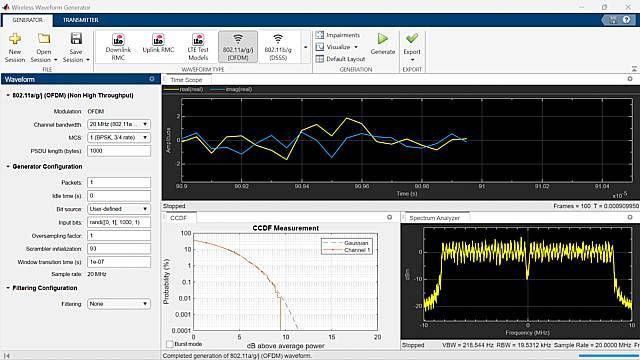
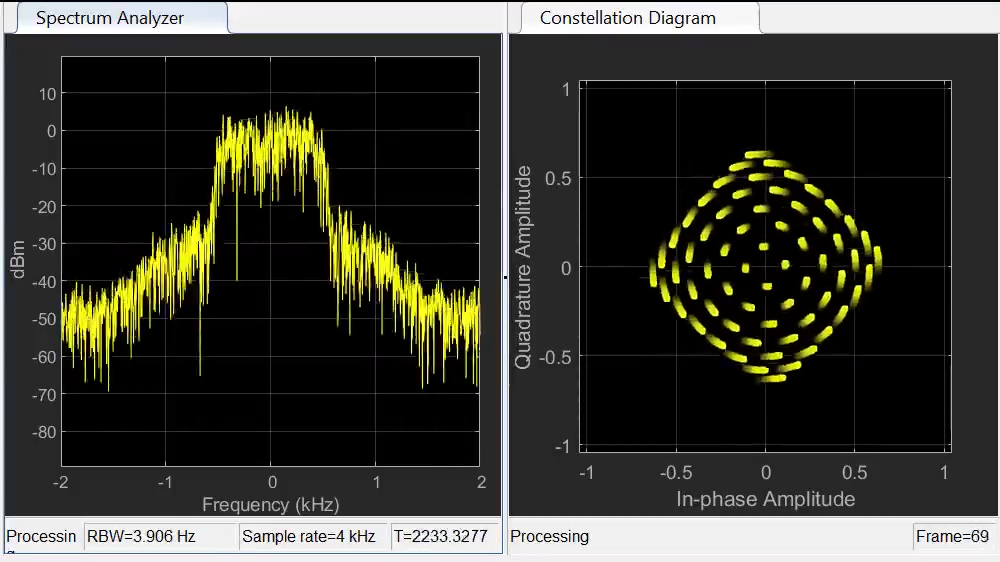
Waveform Generation
Generate a variety of customizable or standard-based physical layer waveforms. Use the Wireless Waveform Generator app to create test signals. Use waveforms as golden references for your designs.

RF Propagation and Channel Modeling
Perform ray tracing analyses on indoor and outdoor scenarios. Characterize effects of noise and fading. Account for path loss due to free space and atmospheric effects.
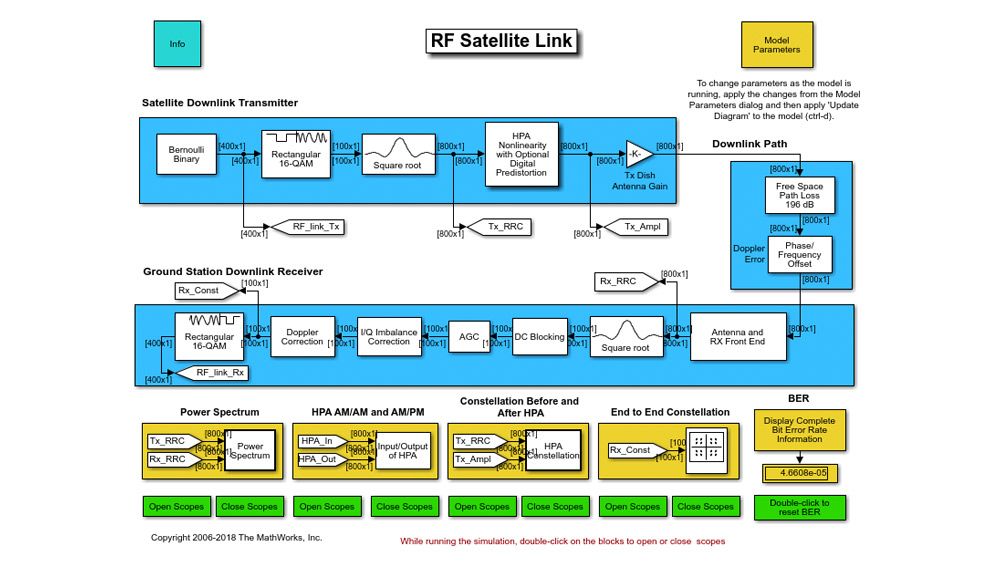
End-to-End Simulation
Simulate link-level models of communications systems. Explore what-if scenarios and evaluate system parameter tradeoffs. Obtain expected measures of performance such as BER, PER, BLER, and throughput.
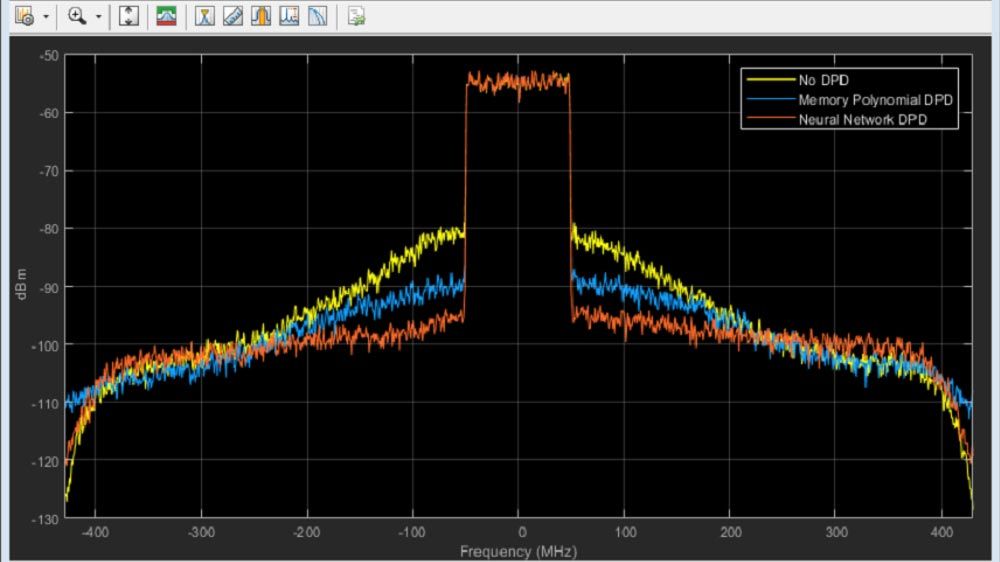
AI for Wireless
Use AI for wireless challenges such as modulation scheme identification, RF fingerprinting, spectrum monitoring, and signal classification. Create synthetic signals with RF impairments to train AI models. Capture over-the-air signals with SDR hardware for training or testing purposes.

RF, Antenna, and MIMO
Model RF front end effects, antenna designs, and digital baseband systems in one environment. Include high-fidelity models of RF components, antennas, and phased array systems. Boost system performance with MIMO and massive MIMO multiple antenna techniques. Characterize MIMO receivers and channels.
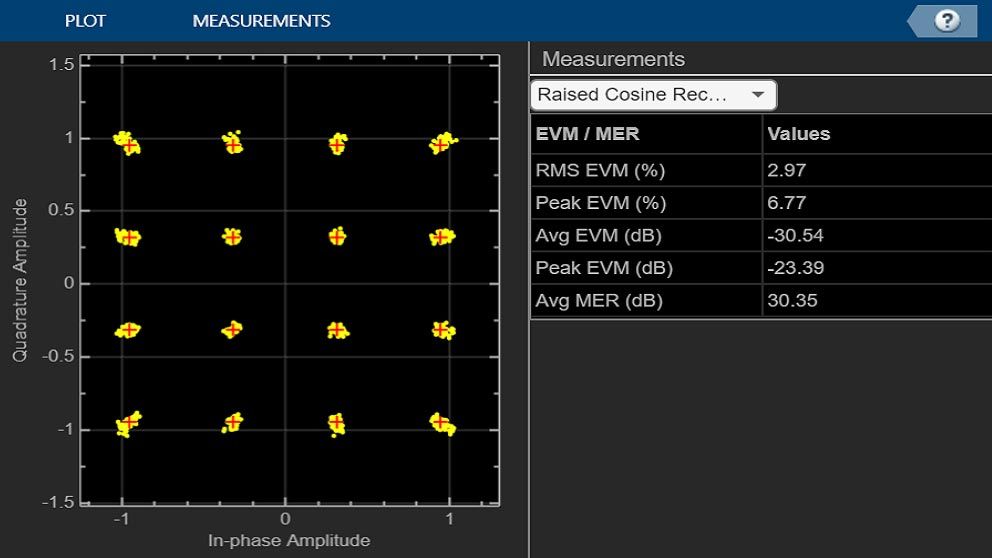
Test and Measurement
Compute standard measurements, like EVM, ACPR, ACLR, MER, and CCDF, to quantitatively characterize system performance. Transmit over the air with hardware signal generators.
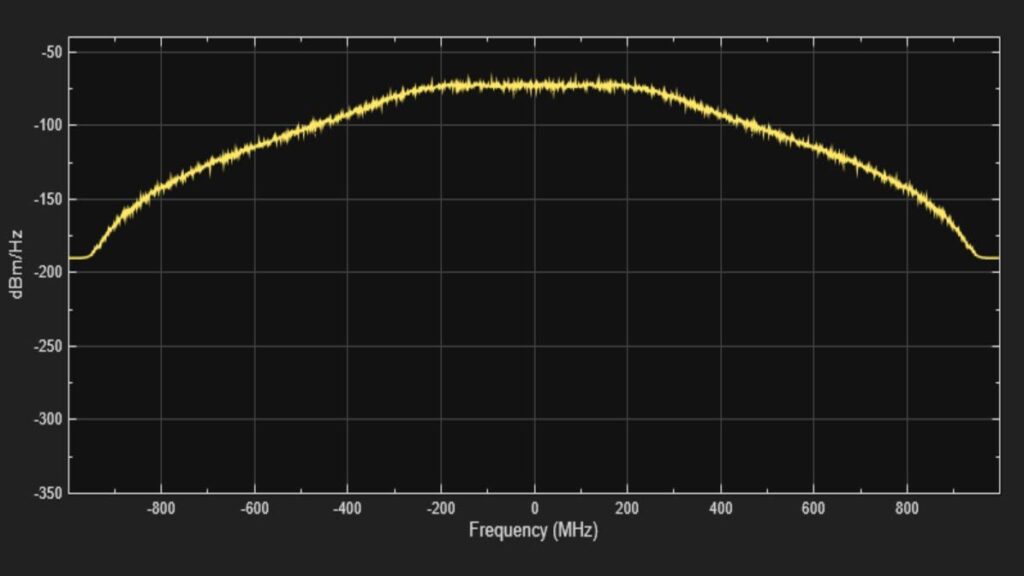
UWB, ZigBee, and Other Standards
Generate standard-based waveforms for ultra-wideband (UWB), ZigBee®, TV, ADS-B, broadcast FM, direct sequence spread spectrum (DSSS), and other systems. Simulate end-to-end links with relevant channel models and reference receiver designs for those same systems.

Performance Acceleration
Use multiple local cores, enterprise clusters, GPUs, AWS®, and FPGAs to accelerate communications link simulations. Achieve several orders of magnitude improvement over a single CPU.
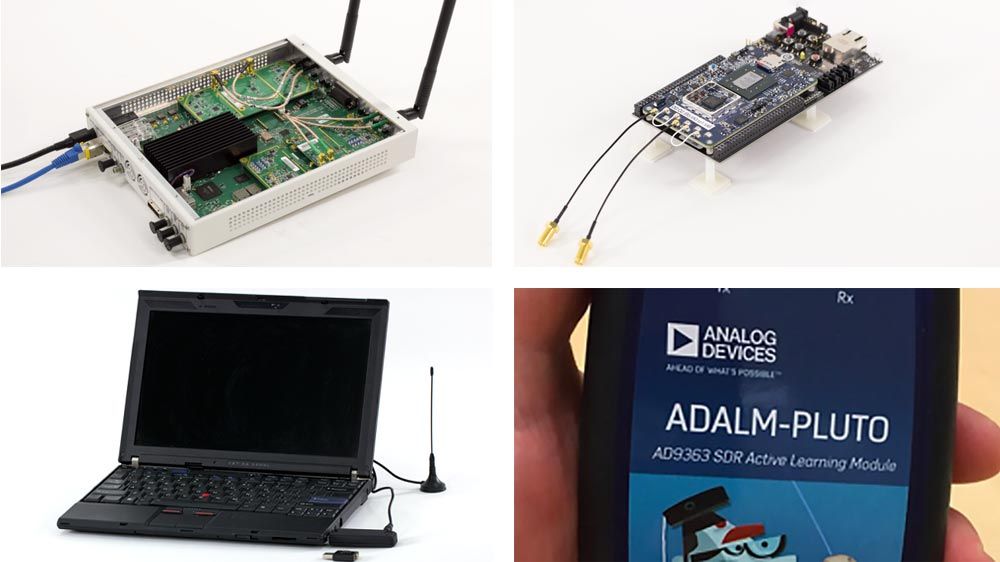
Software-Defined Radio
Connect your transmitter and receiver models to radio devices and verify your designs via over-the-air transmission and reception.
